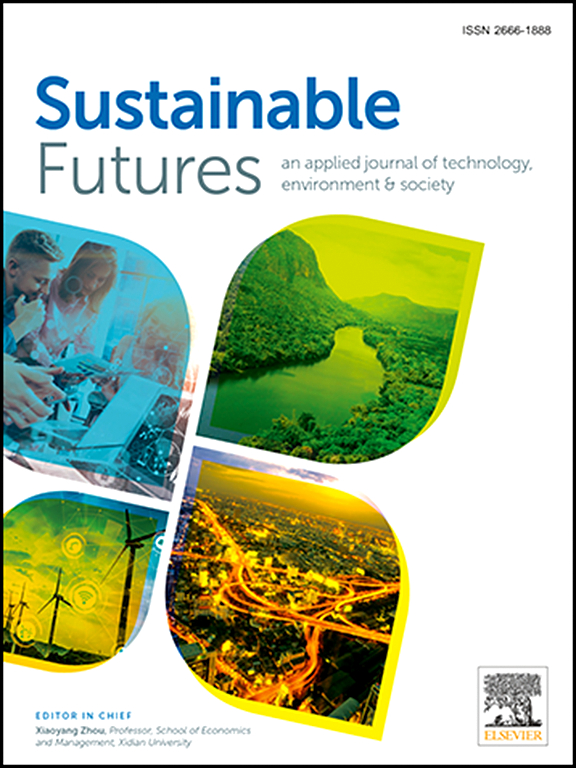预测医疗废物的产生和估计废物转化为能源的潜力与相关的温室气体排放:一个整体分析
IF 4.9
2区 社会学
Q2 ENVIRONMENTAL SCIENCES
引用次数: 0
摘要
本研究基于不同情景,建立了三个新的半经验模型,预测了台湾到2040年的医疗废物(MW)产生量。模型1至模型3的情景提供了一系列数据,涵盖了到2040年兆瓦发电量的潜在停滞、指数和线性增长情景。基于RMSE、MAPE(%)、R2和残差分析值,所有模型均具有较高的拟合优度和准确性。其中,Model 3被认为是最适合的。预计到2040年,本文章由计算机程序翻译,如有差异,请以英文原文为准。

Forecasting medical waste generation and estimating waste to energy potentials with associated greenhouse gas emissions: A holistic analysis
Three novel semi-empirical models are generated in this study to forecast Türkiye’s medical waste (MW) generation till 2040 based on different scenarios. Scenarios for models 1 to 3 provides a spectrum of data that covers potential stagnancy, exponential and linear rise scenarios for MW generation till 2040. All models alluded high goodness of fit and accuracy based on RMSE, MAPE (%), R2 and residual analysis values. Model 3 is deemed as the best fit among them. Türkiye’s average MW generation in 2040 is forecasted to be 380 thousand tons and energy worth equal to the consumption of 206.5 million m3 of natural gas (NG) could be produced if all the combustible portion of MW, which is 92 % of the total, is collected and incinerated. It is also estimated that from incineration of MW energy worth equal to 0.13–0.21 % of Türkiye’s annual NG consumption valued at 26.2–77.4 million US$ could be generated between 2022 and 2040. In 2040, if all the MW generated is collected and further processed for energy generation theoretical NOx, CO, and SO2 emissions from Tier 2 uncontrolled air and Tier 1 rotary kiln incineration are estimated as nearly 680, 570, 420 and 980, 8, 120 tons, respectively. Lastly, this study could be used as a basis for estimating MW generation in different countries with associated energy equivalence analysis and GHG emission calculations.
求助全文
通过发布文献求助,成功后即可免费获取论文全文。
去求助
来源期刊

Sustainable Futures
Social Sciences-Sociology and Political Science
CiteScore
9.30
自引率
1.80%
发文量
34
审稿时长
71 days
期刊介绍:
Sustainable Futures: is a journal focused on the intersection of sustainability, environment and technology from various disciplines in social sciences, and their larger implications for corporation, government, education institutions, regions and society both at present and in the future. It provides an advanced platform for studies related to sustainability and sustainable development in society, economics, environment, and culture. The scope of the journal is broad and encourages interdisciplinary research, as well as welcoming theoretical and practical research from all methodological approaches.
 求助内容:
求助内容: 应助结果提醒方式:
应助结果提醒方式:


